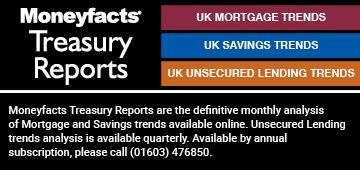Rachel Springall, Finance Expert at Moneyfacts, said:
“Savings rates are climbing at a promising pace but the upheavals within the sector are largely fuelled by providers who are competing towards the top end of the market. The average one-year fixed bond sits above 1% and the latest month-on-month rise is the highest uplift seen in over a decade. This is a substantial movement as the uplift pre-dates the influential Government lending initiatives that decimated the savings market, which included the Funding for Lending Scheme launched back in 2012.
“Fixed rates still have room for improvement, particularly with the Bank of England base rate rising back-to-back for a fourth time and now standing at 1%, the highest it’s been since February 2009. Those savers who are looking to secure a guaranteed return may be pleased to see competition in the fixed rate sector, but as rates improve, some savers may not be comfortable with locking their money away for longer than a year. However, those who wish to do so will find the longer-term fixed bond average has seen the largest monthly rise since August 2009, and is the highest rate seen since August 2019.
“Those savers hoping to see the Bank of England base rate rises passed on to their variable rate account will see both the average easy access rate and average notice rate has reached a two-year high this month. However, the stark reality is that average variable rate returns are still far lower than what was available before the first UK lockdown was initiated and base rate was consecutively cut to a record low of 0.10% in March 2020. As notice account returns creep ever closer to 1%, last seen in March 2020 (1.00%, a difference of 0.20% compared to the latest 0.80% return), the average easy access rate of 0.39% is less than half the average notice rate. Savers may then want to consider a notice account as an alternative if they want to acquire a higher rate, but do not want to commit to a fixed rate bond or ISA.
“Savings providers who are working hard to secure a place within the top end of the market must keep abreast of the quick pace of their competitors or could fall outside of the top rate tables. Those savers who are comparing their options will need to decide whether to fix or keep their money in a more flexible pot, but also consider their tax-free allowances and any difference in rate between ISAs and alternative accounts that do not have a tax-free wrapper.”
Rachel Springall, Finance Expert at Moneyfacts, said:
“Savings rates are climbing at a promising pace but the upheavals within the sector are largely fuelled by providers who are competing towards the top end of the market. The average one-year fixed bond sits above 1% and the latest month-on-month rise is the highest uplift seen in over a decade. This is a substantial movement as the uplift pre-dates the influential Government lending initiatives that decimated the savings market, which included the Funding for Lending Scheme launched back in 2012.
“Fixed rates still have room for improvement, particularly with the Bank of England base rate rising back-to-back for a fourth time and now standing at 1%, the highest it’s been since February 2009. Those savers who are looking to secure a guaranteed return may be pleased to see competition in the fixed rate sector, but as rates improve, some savers may not be comfortable with locking their money away for longer than a year. However, those who wish to do so will find the longer-term fixed bond average has seen the largest monthly rise since August 2009, and is the highest rate seen since August 2019.
“Those savers hoping to see the Bank of England base rate rises passed on to their variable rate account will see both the average easy access rate and average notice rate has reached a two-year high this month. However, the stark reality is that average variable rate returns are still far lower than what was available before the first UK lockdown was initiated and base rate was consecutively cut to a record low of 0.10% in March 2020. As notice account returns creep ever closer to 1%, last seen in March 2020 (1.00%, a difference of 0.20% compared to the latest 0.80% return), the average easy access rate of 0.39% is less than half the average notice rate. Savers may then want to consider a notice account as an alternative if they want to acquire a higher rate, but do not want to commit to a fixed rate bond or ISA.
“Savings providers who are working hard to secure a place within the top end of the market must keep abreast of the quick pace of their competitors or could fall outside of the top rate tables. Those savers who are comparing their options will need to decide whether to fix or keep their money in a more flexible pot, but also consider their tax-free allowances and any difference in rate between ISAs and alternative accounts that do not have a tax-free wrapper.”











